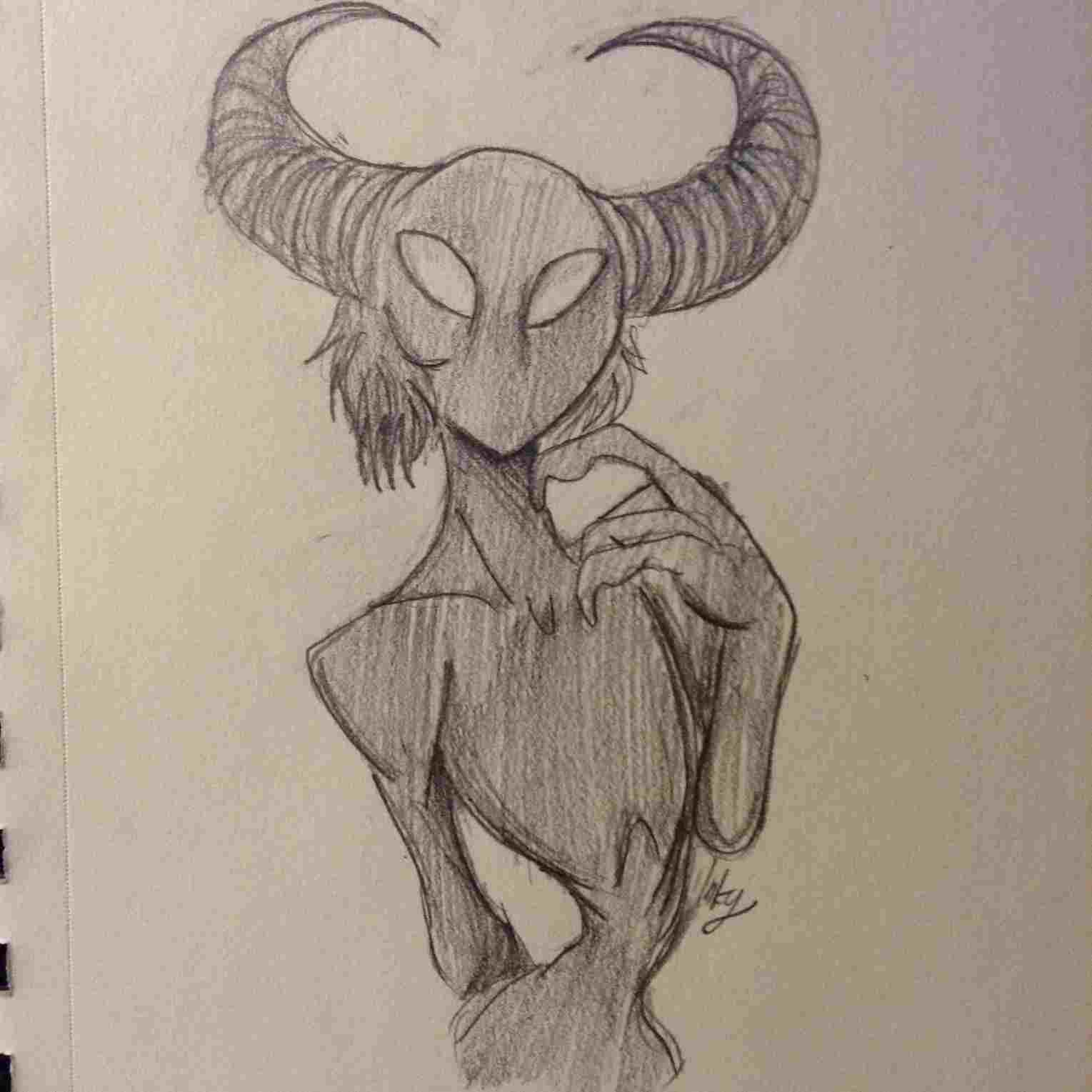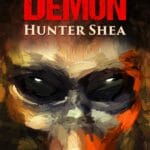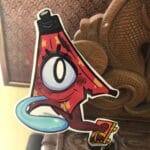Dive into the fiery depths of artistic expression with our ultimate guide to demon drawings, exploring everything from beginner techniques to mastering terrifying details.
Why Draw Demons? The Allure of the Demonic
Why are we drawn to the shadows, to creatures that embody fear and darkness? The allure of demon drawings lies not just in their capacity to frighten, but also in their ability to help us explore the depths of human emotion, confront our hidden anxieties, and challenge our artistic skills.
More than just scary scribbles, demon drawings can be intricate, beautiful, even humorous, depending on the artist’s vision. They offer a unique lens through which to examine our relationship with the unknown, the forbidden, and the shadows that lurk within us all.
A History of Hellscapes on Paper: From Ancient Origins to Modern Masters
Demon drawings are far from a modern invention. Their roots reach deep into human history, offering a fascinating glimpse into the evolution of art, culture, and our understanding of the supernatural.
Ancient Echoes: Journey back to ancient civilizations like Mesopotamia, where the menacing demon Pazuzu, with his grotesque features and malevolent gaze, was believed to bring disease and misfortune. These early depictions served not just as artistic expressions, but also as talismans, warnings, and reflections of deeply held beliefs.
Through the Medieval Lens: The Middle Ages saw demon drawings take on new life in illuminated manuscripts. Often grotesquely depicted, these demons served as visual reminders of the ever-present struggle between good and evil that defined the medieval mindset.
Renaissance & Beyond: The Renaissance brought a renewed interest in classical mythology and anatomy. Artists like Michelangelo and Leonardo da Vinci, though not solely focused on demons, infused their works with a realism and dynamism that would influence depictions of the demonic for centuries to come.
The Enduring Influence of Gustave Doré: No exploration of demon drawing would be complete without acknowledging the masterful engravings of Gustave Doré. His illustrations for Dante’s Inferno are legendary, capturing the chilling essence of the underworld with incredible detail and emotive power.
Modern Masters of the Macabre: Even today, artists like Clive Barker continue to push the boundaries of demon drawing, exploring themes of horror, fantasy, and the human psyche with a masterful blend of realism and the grotesque.
Unleashing Your Inner Demon Artist: Techniques and Styles
Fuel your artistic nightmares! You don’t need to be a master artist to capture the raw power and emotion that demon drawings evoke.
Beginner’s Basics: Taking the First Steps into the Abyss
Shape Language: Start simple. Think about the basic shapes that make up a demon – circles for the head and ribcage, cylinders for limbs, triangles for claws. Exaggerate these shapes to create a sense of power and menace.
Eyes are the Windows to the Soul (or Lack Thereof): A demon’s eyes are crucial for conveying emotion. Experiment with different shapes and sizes. Narrowed eyes can suggest cunning, while wide, staring eyes evoke madness or terror.
The Power of the Silhouette: Before adding details, ensure your demon has a strong, recognizable silhouette. This will make your drawing more impactful, even from a distance.
Advanced Techniques: Refining Your Demonic Vision
Anatomy (It’s Not Just for Humans Anymore!): While you don’t need to be a medical illustrator, understanding basic anatomy can greatly enhance your demon drawings. Consider the musculature (or lack thereof), how limbs connect, and how to create a sense of weight and balance.
Texture is Key: Whether it’s smooth, scaly skin, jagged horns, or rotting flesh, texture adds another layer of realism and depth to your demon drawings. Experiment with different pencils, charcoal, or digital brushes to achieve a variety of effects.
The Dance of Light and Shadow: Mastering light and shadow is crucial for creating a sense of depth and drama in your demon drawings. Use strong contrasts to highlight key features and create a more dramatic composition.
Exploring Different Styles: Finding Your Demonic Voice
Beyond horns and fangs, demon drawings offer a diverse landscape of styles.
Realism: For those who revel in the grotesque, realism is the way to go. Study anatomy books, observe real-life creatures, and focus on capturing every gruesome detail with chilling accuracy.
Cartoon/Comic: Embrace exaggeration and bold lines to create demons that are both menacing and humorous. Think of artists like Mike Mignola (Hellboy) for inspiration.
Manga/Anime: Inspired by Japanese art, manga demons often sport wild hairstyles, exaggerated features, and a dynamic energy that practically leaps off the page.
Abstract: Who says demons have to conform to any recognizable form? Explore the essence of demonic energy through abstract shapes, colors, and textures.
A Cornucopia of Resources: Fuel for Your Artistic Fire
Access over 36,575 FREE demon drawing illustrations on Pixabay. The internet offers a treasure trove of inspiration and resources for budding demon artists.
Free Image Databases: Sites like Pixabay provide thousands of royalty-free demon illustrations and photos to inspire you.
Learn from the Legends: Study the works of masters like Gustave Doré, Wayne Barlowe (known for his creature designs), and contemporary artists pushing the boundaries of the genre.
Video Tutorials: YouTube channels like “Proko” (anatomy), “Borodante13” (creature design), and “Sycra” (digital painting) offer excellent demon drawing tutorials for all skill levels.
Join the Community: Platforms like DeviantArt and ArtStation provide a space to share your work, receive feedback, and connect with other demon art enthusiasts.
Untapped Potential: The Future of Demon Drawing
The demonic is far from static. As technology advances and artistic boundaries continue to be pushed, the future of demon drawing is full of exciting possibilities.
The AI-Generated Abyss: AI art generators are creating truly unique and often unsettling interpretations of demons. Explore these tools, not just to create art, but to expand your understanding of how AI interprets our prompts and visualizes the unknown.
Beyond the Monstrous: Challenge traditional depictions. Explore demons as complex characters with their own motivations, desires, and even vulnerabilities.
Demons as Social Commentary: Use demon drawings to address social issues, political anxieties, or the darker aspects of human nature.
The Dictionnaire Infernal: A Journey into Demonic History
The Dictionnaire Infernal is a fascinating historical artifact that provides a glimpse into how demons were perceived in the 19th century.
Originally conceived as a skeptical look at demonology, the Dictionnaire Infernal by Jacques Collin de Plancy evolved over time to include a comprehensive catalog of demons, complete with descriptions, hierarchies, and, most notably, illustrations. These illustrations, created by Louis Le Breton, are striking in their detail, often blending the grotesque with a strange sense of whimsy.
The Dictionnaire Infernal continues to fascinate and inspire artists today. It serves as a reminder that our interpretations of the demonic are always evolving, shaped by the cultural, artistic, and historical contexts in which they are created.
Beyond the Textbook: Contemporary Trends in Demon Drawing
Demon drawing isn’t stuck in the past. Artists are constantly reimagining these creatures, drawing inspiration from a diverse range of sources.
Embrace the Influence of Anime and Manga: These styles have brought a vibrant energy to demon drawing, with their emphasis on dynamic poses, expressive eyes, and stylized features.
Explore the Depths of Dark Fantasy and Horror: Genres like Lovecraftian horror offer a wealth of inspiration for creating truly unsettling and otherworldly demons.
Demons as Mirrors to the Human Psyche: Modern demon drawings often delve into psychological themes, with demons representing inner turmoil, repressed desires, and societal anxieties.
The Power of Digital Art: Software like Photoshop and Procreate have revolutionized demon drawing, allowing artists to achieve incredible detail, realism, and otherworldly effects.
The future of demon drawing is full of potential. Imagine stepping into our demonic creations through virtual reality or witnessing AI algorithms generate entirely new breeds of these creatures. The possibilities are as limitless as the imagination itself.
The Psychology and Ethics of Depicting Demons
Demon drawings offer more than just visual thrills; they provide a fascinating window into the human psyche.
Demons as Projections of Fear: Throughout history, demons have often served as scapegoats for societal anxieties, natural disasters, and unexplained phenomena.
The Shadow Self: Carl Jung’s concept of the “shadow self” resonates deeply with depictions of demons. They represent the darker, repressed aspects of our personalities, the parts of ourselves we might not want to acknowledge.
Ethical Considerations: A Necessary Conversation
While demon drawing offers a powerful form of artistic expression, it’s crucial to approach the subject with sensitivity and awareness.
Cultural Sensitivity: Demonic imagery can hold different meanings across cultures and religions. Be mindful of appropriating or misrepresenting these beliefs.
Artistic Intent: What message are you trying to convey through your demon drawings? Are you aiming for horror, social commentary, psychological exploration, or pure entertainment?
Responsible Representation: Avoid perpetuating harmful stereotypes or glorifying violence and hatred through your depictions.
Key Takeaways:
– Demon drawings provide a fascinating intersection of art, psychology, and cultural history.
– Approach the subject with respect, sensitivity, and a willingness to explore its complexities.
Unleash your creativity, hone your skills, and remember—the only limit to what you can create is the bounds of your imagination. If you dare to learn more about the supernatural, you should read the shocking story of what happened to a dover Massachusetts demon that terrified locals and garnered national attention in the 1970s.
- SYBAU See You Baby Meaning: Gen Z Slang Evolves - July 1, 2025
- Unlock Your Inner Youth: Lifestyle Secrets for a Vibrant Life - July 1, 2025
- Decode SYBAU Meaning: Gen Z Slang Explained - July 1, 2025






